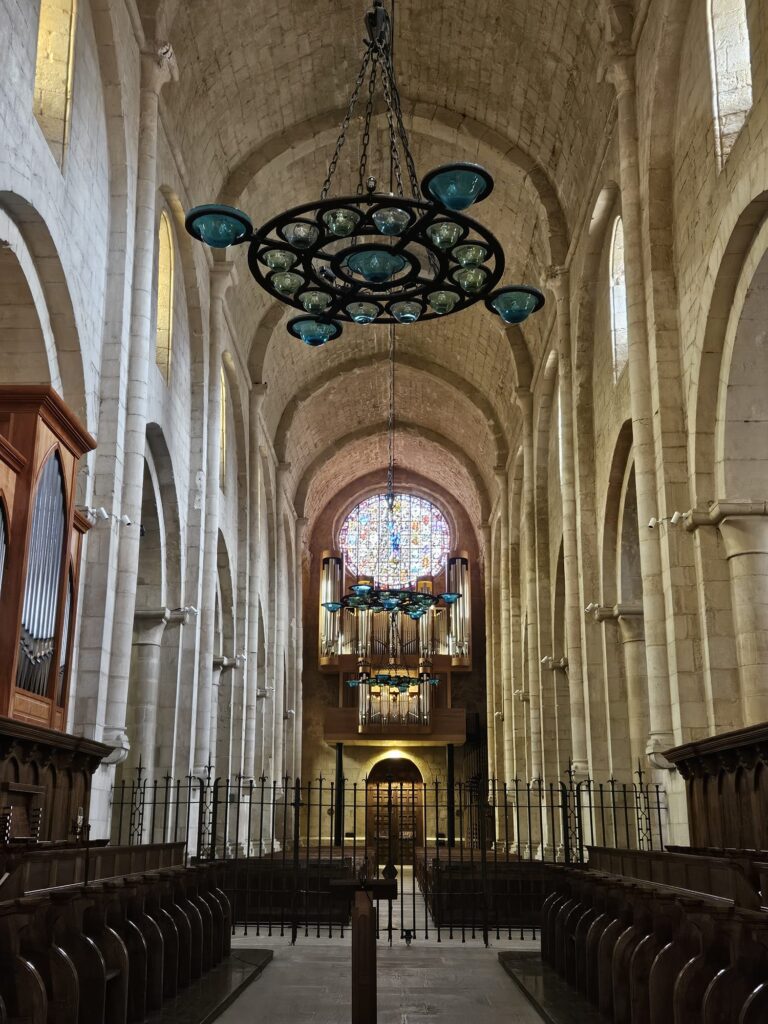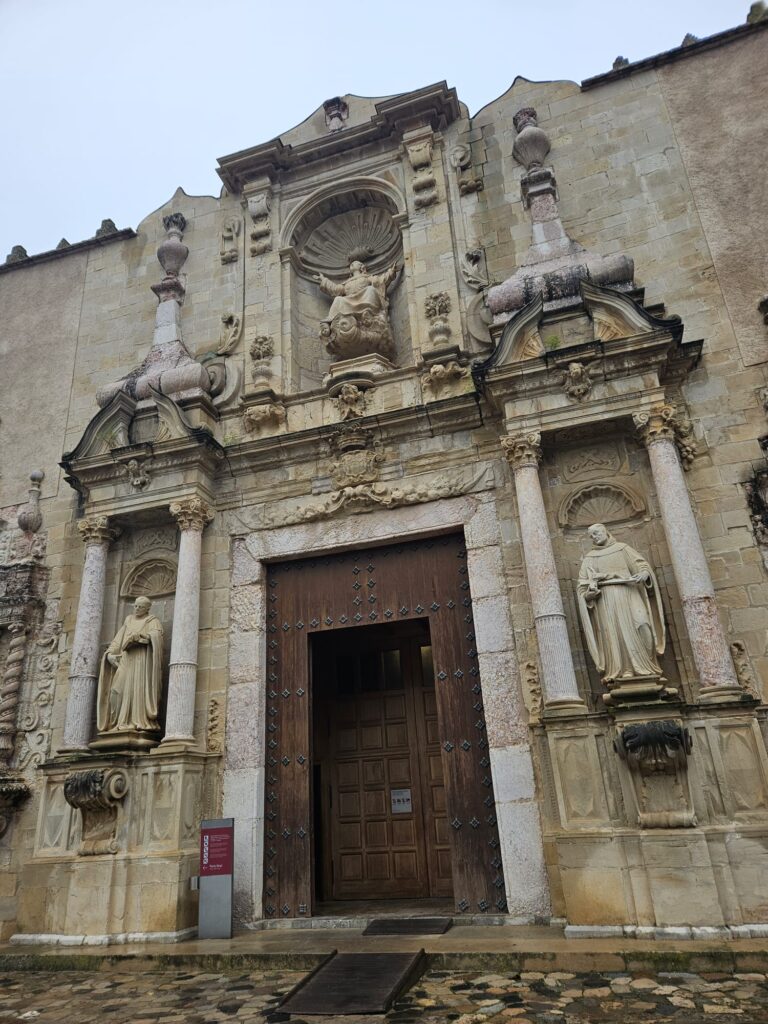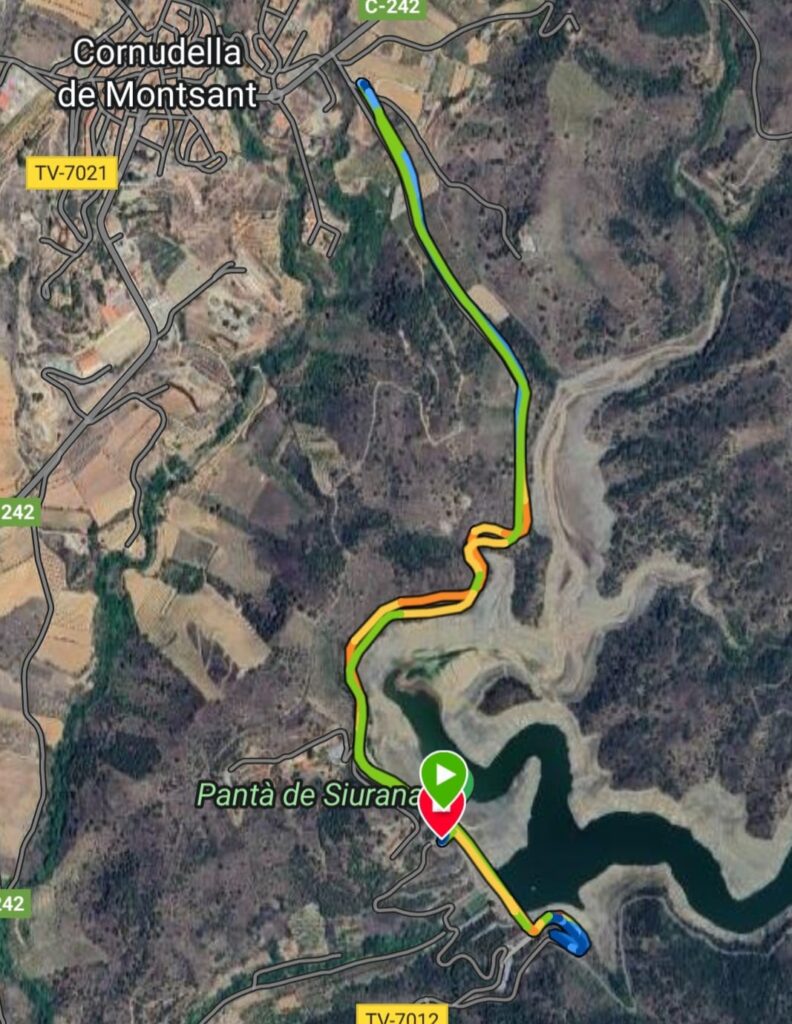The area around Prades in Catalunya, where Poblet and Siurana are located, is a nature paradise with a “cozy” mediterranean air, where you can run in trails which zigzag between vineyards and olive fields.
In spring, nature is fillled with the bright colors of flowers and the white of the almond trees in bloom.

And these lushy mountains of the “Serra de Prades” are also home to ancient monasteries and some of the best wines of Catalunya: it’s the Priorat region!

The Cistercian Route
Around Prades, you cannot miss the highlight of the marvelous Cistercian Route: Santa Maria de Poblet Abbey.
The Cistercian route offers a lot of opportunities for running and visiting historical monuments that will enlighten your soul and transport you into other ages; in its web you can watch a 3 minutes video that will tease you into visiting the area for sure. It includes also Santes Creus Monastery and VallBona de les Monges (“Good Valley of the Nuns”, in a direct translation from Catalan).
Monestir de Santa Maria de Poblet
Poblet Monastery is one of the largest and most complete Cistercian abbeys in the world. It was built from XII century and it includes a fortified royal residence, with a series of polygonal or square towers, and the pantheon of the ancient kings and queens of Catalonia and Aragon; familiar names to every Catalan kid: Martí I l’Humà, Pere el Cerimoniós, Jaume el Conqueridor…

We entered through the fortified “Porta Daurada” (Golden Door) before the second enclosure, the Plaça Major (Main Square). And then there is the “Porta Reail” (Royal Doorway) which gives way to the abbey and the church.
What impressed me the most, though, was the church. So solemn!

The Church looks like a fortress, it’s Roman to the core. It is a cemetery of kings and queens who rise from the ground, buried in arches, the Kings with lions at their feet and the Queens with angels in their crowns.
And everywhere the same stone; flesh-colored stone, the color of the Earth here.

Almost no light enters, and there are almost no mosaics. This is a collected space to pray like old times.
And we were lucky enough to be a Poblet during Easter, so we attended a wonderful sung Conventual Mass! It was a very spiritual experience, surrounded only by a bunch of locals who knew all the answers and hymns, the beatiful sound of the gigantic organ and the even more beatiful voices of the monks.

But let’s not forget that Poblet Monastery is extraordinarily important in terms of art, culture, history and spirituality and for its key role in the repopulation and agricultural exploitation of New Catalonia under the Crown of Aragon.
Siurana Reservoir
For running, we chose to run 5 kilometers around the Siurana Reservoir. The area gives you plenty of options for trail running and for walking.

We set off from the Siurana Reservoir parking to run 2 kilometers from the dam parking to Cornudella, in a wide asfalth road with almost no vehicles. It has some elevation but barely noticeable, compared to the dirt roads that we took later.
After going to Cornudella and back, we crossed the Siurana dam and went up the hill opposite to it. We didn’t reach the top as we had timed our run to be a short one (being only 1 week and a half away from the Boston Marathon).

But the area is perfect if you want to do trail running and strengthen your legs! The paths are wide, not too rocky and with an amazing scenery.
Another option is to run / walk the old path from Cornudella, between magnificient rocks. This way your reach the town of Siurana, the last Muslim bastion during the Christian recapture of Catalonia! This is a much longer and difficult route, that can take up to 5 hours to complete by brisky walking.


Map





